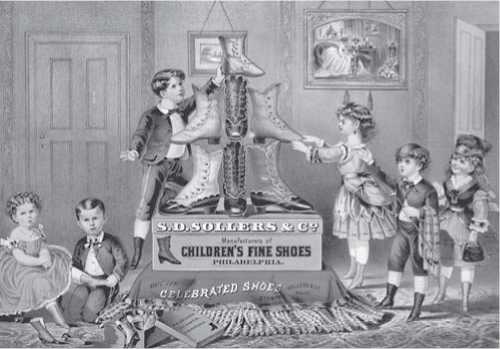Advertising can be traced back to the earliest days of recorded history, but modern advertising has its roots in the post-Civil War era. The major elements dominating advertising during this period include the rise of popular MAGAZINES; the ascendancy of large, cheap, metropolitan NEWSPAPERS using new technologies to improve their appearance; the growth of consumer-orientated industries; and the creation of advertising agencies, whose profits rested on reaching large audiences for their clients. The most important factor in the evolution of advertising was the existence of a large urban middle class with financial resources allowing them to buy a wide variety of consumer goods. Especially crucial for the rise of advertising was the large number of middle-class women who had time and money to shop.
Of course, newspapers and magazines go back to the 18th century in the United States, and both organs carried advertising. But before the Civil War these ads were uninteresting because the papers were limited by current technologies. New methods of printing led to the multiplication of urban journals known as the Penny Press. By the late 19th century, both newspapers and magazines carried

Advertisement for children's shoes, ca. 1874 (Library of Congress)

Advertisement for the Climax mowing machine, ca. 1871
(Library of Congress) photographs and were visually appealing to readers. Newspapers, which before the war consisted of four sheets, were much larger, running 20 or more pages filled for the most part with advertising. Ads by DEPARTMENT STORES, the latest retailing innovation, were the major source of revenue for these papers.
The number of magazines introduced in the late 19th century doubled between 1880 and 1890, with virtually all of them featuring fancy advertisements aimed particularly at women. Cyrus Curtis founded the Ladies’ Home Journal, which became the base of a publishing empire aimed largely at affluent middle-class buyers. The Journal and its many imitators became the vehicle for the sale of a wide variety of food items, cosmetics, and ready-made clothing. Without the advertising in these journals, it is unlikely that new products such as Campbell’s Soup would have reached the tables of millions of American homes or that Fels-Nap-tha would have become the preferred soap of American consumers. The success of Lydia E. Pinkham’s Vegetable Compound for “female complaints” was entirely due to its magazine advertisements.
A group of entrepreneurs—including George P. Rowell, F. Wayland Ayer, and J. Walter Thompson—used the revolution in newspapers and magazines to found advertising agencies that established them as middlemen between industrialists, retailers, and publishers. These agencies negotiated rates for advertisers, designed the ads, and did market research to determine the best place to advertise and the efficiency of these ads. Thompson specialized in magazines and in the 1890s placed almost 90 percent of all advertisements in these journals. Larger industries and retailers developed departments devoted exclusively to advertising that worked closely with these agencies.
Advertising in the late 19th century was intimately linked with the development of consumerism and with the creation of a vast array of new products. The purchase of luxury goods was changed by advertising from something that was regarded as un-Christian and immoral to an act that promoted personal and national well-being. It is unlikely that the vast increase in industrialism would have succeeded without advertising. Few would have bought canned soup without the “um um good” advertisements of Campbell’s Soup.
Further reading: Pamela Walker Laird, Advertising Progress (Baltimore: Johns Hopkins Press, 1998); James D. Norris, Advertising and the Transformation of American Society, 1865-1920 (New York: Greenwood, 1990); Daniel Pope, The Making of Modern Advertising (New York: Basic Books, 1983).
—Herbert Ershkowitz




 World History
World History









